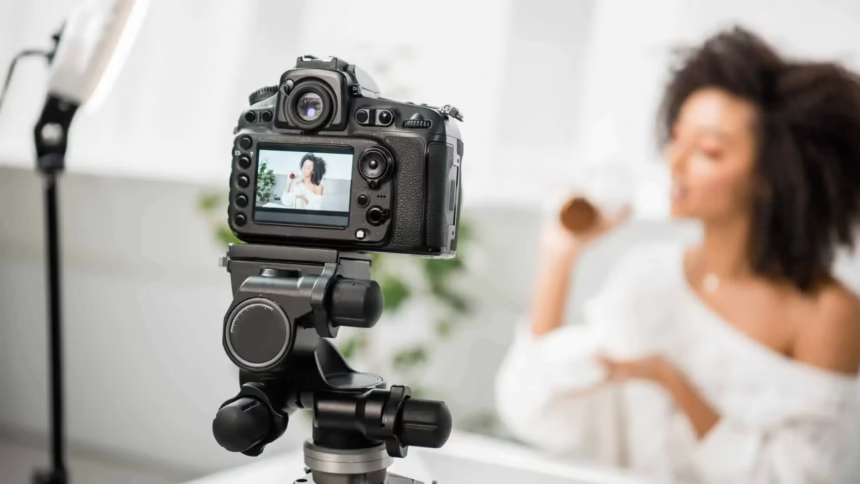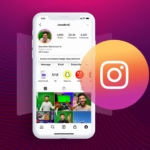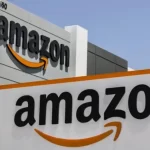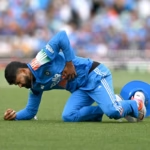A small but active audience can win paid brand deals. The path is simple: focused value, clear engagement, and straightforward packages that deliver results. In 2025, brands care about measurable actions like short video views, livestream interactions, and reusable UGC, not just huge reach.
This guide is for creators with fewer than 10,000 followers, podcasters, bloggers, streamers, and student athletes. It lays out a roadmap for niche positioning, sponsor-ready assets, smart outreach, simple pricing, and proof that works. It favors relationships over follower counts, and it encourages starting local to score quick wins and real testimonials.
Most of all, it proves that small followings can create big outcomes when the focus is tight and the plan is clear.
Why Small Followings Win Sponsorships Today
Brands buy outcomes, not just audience size. They want awareness in the right place, engagement with the right people, and sales they can track. Micro and local partnerships shine here because they feel personal and cost less to test.
In 2025, there is growing interest in micro-influencers, local brand deals, and digital-first activations like short videos, livestreams, and creator-led ads. Many brands actively seek small creators for targeted reach and trust. For proof of appetite on the brand side, see this list of brands that work with micro-influencers in 2025. It shows how many categories now invest in smaller voices tied to specific communities.
Engagement Beats Follower Count
Engagement is the heartbeat of small accounts. It includes comments, replies, saves, shares, clicks, and watch time. Brands love high engagement because it signals trust and attention, which leads to action.
A post with 8 percent engagement from a niche audience can outperform a large account that only sees 1 percent. That difference compounds as content rolls out across stories, reels, and pinned posts.
Strong move for any creator: track averages across 5 to 10 recent posts. Note likes, comments, saves, shares, and watch time or retention. Keep a simple list of recurring audience questions and pain points. Those notes become sponsor pitch angles and content hooks.
Niche and Local Advantage
A clear niche makes discovery easy and targeting simple. Think budget fitness, campus life, indie skincare, youth soccer, vintage streetwear, or backyard gardening. The tighter the lens, the easier it is for a brand to see the fit.
Local wins come fast. Smaller shops and regional brands decide quicker, run lower-cost tests, and appreciate creators who already shop there. Start with 3 to 5 local targets the creator already uses and likes. Authentic usage is the strongest proof.
Digital Activations That Fit Small Accounts
Small accounts can run focused digital activations that are easy to measure:
- Short videos or reels that demo a product
- Stories with polls, links, and quick Q&A
- Livestream demos, unboxings, or try-ons
- How-to posts or mini-tutorials
- UGC that the brand can reuse
- Co-hosted giveaways with simple rules
In 2025, creators can also offer virtual events, live shopping, and creator-led content that brands can run as ads. Each piece is trackable and budget friendly. That combination is ideal for first deals.
Set Simple Goals and KPIs
Pick one main goal per campaign:
- Awareness: views, reach, watch time
- Engagement: comments, saves, shares
- Sales: link clicks, discount code uses, DMs or email signups
Keep tracking basic. Use UTM links and unique codes. After the campaign, send a short summary that shows what worked and suggests one improvement for next time.
Get Sponsor-Ready in One Week
A professional setup helps small creators punch above their weight. It does not need to be complex. This one-week sprint sets the stage.
Clarify Niche, Audience, and Promise
Write a one-line brand statement: who the creator helps, the main problem solved, and how the content style stands out.
Describe the audience with 4 to 6 bullets:
- Age range and stage of life
- Interests and hobbies
- Location or region
- Budget and buying habits
- Common pain points
- Favorite platforms and formats
Create three content pillars that guide future posts. For example, “Budget gym routines,” “Quick meal prep,” and “Beginner gear reviews.”
Build a Simple Media Kit That Sells
Keep it clean and short. One to two pages or a single page on a website is enough. Include:
- A short bio and one-line statement
- Audience snapshot and demographics
- Platforms and content averages
- Best content examples with screenshots
- Past collaborations or testimonials, local if possible
- Contact info and a clear call to action
For more structure on working with small brand deals, this guide to niche brand deals for small influencers offers useful context on low-barrier offers and starter programs.
Create Clear Packages and Starter Pricing
Packages make it easy for brands to buy. Offer three tiers with defined deliverables, timelines, and one main goal each. Avoid vague offers and keep the scope tight.
Example starter packages:
| Package | What’s Included | Timeline | Goal |
|---|---|---|---|
| Basic | 1 short video, 3 stories, link sticker | 7 days | Awareness |
| Standard | 2 short videos, 5 stories, link in bio for 7 days | 10 to 14 days | Engagement |
| Premium | 3 short videos, 1 livestream, 1 blog or email mention | 2 to 3 weeks | Sales |
Smart add-ons:
- Whitelisting rights for the brand to run the content as ads
- Extra versions for different platforms
- Usage length extensions, for example 30, 60, or 90 days
- Exclusivity by category for a set period
Price based on time, effort, and expected results. Start simple, do not overpromise, and be clear on what is included.
Polish Profiles and Content Calendar
Update bios to show the niche and add a contact email. Pin one strong post that looks like a sponsor example. Make a 30-day light content plan with 2 to 3 posts per week tied to the pillars. Add a highlight for brand work and testimonials. Keep recent posts clean, on-topic, and easy to skim.
Find the Right Sponsors and Pitch With Confidence
Outreach is a skill, not a mystery. The plan is to keep it friendly, local when possible, and value-first.
Build a Target List in One Hour
Start with 10 to 20 names:
- Local shops and services already used
- Niche brands loved by the audience
- Tools or products followers ask about
- Brands currently running creator ads in the niche
Collect contact emails from brand websites or LinkedIn. Track the list in a simple sheet with columns for contact name, email, last touch, status, and notes.
Research Needs and Match the Offer
Scan recent posts, hashtags, newsletters, and ads to see what a brand is pushing now. Common triggers include a product launch, seasonal promo, pop-up event, or a referral push.
Pitch one idea that fits a single clear goal. For example, a demo reel for awareness, a live Q&A for engagement, or a short tutorial series for sales. Keep it measurable and easy to say yes to.
Write a Short Pitch That Gets Replies
Aim for 6 to 8 sentences. Keep it personal and tight.
- Open with one line that shows real relevance.
- State the niche and audience in one or two lines.
- Propose 2 to 3 deliverables with a timeline.
- Offer a simple price range or ask for budget guidance.
- Link the media kit.
- Ask for one next step, for example a quick 10-minute call or approval to send a draft plan.
Subject line ideas:
- “Local idea for your spring push in [City]”
- “Creator proposal for your new [Product] launch”
For more practical ideas on landing deals with a small following, this guide on how to land brand deals as a small influencer walks through content improvements and engagement tactics that pair well with pitching.
Follow Up and Negotiate Without Stress
Follow up after 3 to 5 business days, then once more a week later. If they show interest, ask about timeline, main goal, budget range, and approvals. Offer two package options and one add-on. Keep terms simple.
Instead of heavy discounts, adjust deliverables to match budget. For example, reduce from two videos to one video plus stories, or shorten usage rights.
Deliver Results, Prove ROI, and Earn Repeat Deals
Execution builds trust. Results earn renewals.
Plan the Work With a Simple Brief
Confirm in writing:
- Goal, audience, and key messages
- No-go topics or claims
- Deliverables, formats, and posting dates
- Approval steps and deadlines
- Where and how the brand can use the content, and for how long
Create a simple shot list or outline to keep filming tight and predictable.
Track Performance in Real Time
Use UTM links or unique codes for clicks and sales. Log views, watch time, saves, shares, comments, and DMs tied to the campaign. Take screenshots at 24 hours, 7 days, and 30 days. Share quick updates during the run to build confidence and keep stakeholders aligned.
Send a One-Page Report That Sells the Next Deal
Keep reporting tight and visual. Include:
- The goal and what was posted
- Key metrics and a few standout numbers
- Top comments or DMs that show sentiment
- One or two lessons for next time
- One clear idea for the next campaign
If allowed, add a one-line testimonial. Save the best results as a short case study for future pitches.
Stay Compliant and Professional
Compliance and good habits set small creators apart.
- Use clear FTC disclosures on sponsored posts and gifted items.
- Stick to agreed timelines and approval steps.
- Keep payment terms, usage rights, exclusivity windows, and whitelisting in a basic contract.
- Send clean invoices on time, and confirm receipt.
Professional process is part of the product. It reduces risk and makes renewals easy to approve.
Conclusion
Winning sponsorships with a small following comes down to a simple system: niche clarity, sponsor-ready assets, targeted outreach, clear packages, and proof of results. The fastest path is practical and repeatable.
A quick action plan helps:
- Build the media kit.
- List 15 target brands.
- Send 5 pitches and 2 follow-ups to each.
- Deliver one strong test campaign.
- Turn it into a case study and pitch again.
The creator who commits to consistent, focused action turns a small audience into steady brand deals. The edge is not size, it is trust. And trust, paired with clear outcomes, is what brands buy again and again.















